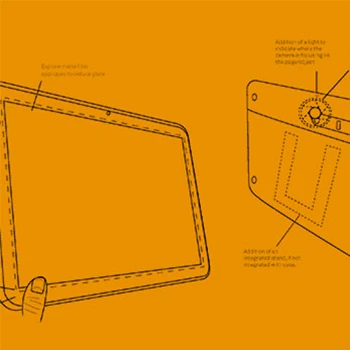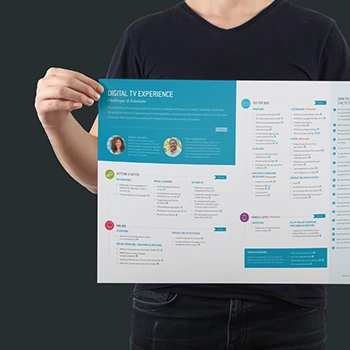What exactly is digital ethnographic research and when should we use it?
Digital ethnographic research immerses researchers into users' natural environments to observe firsthand how they interact with digital products and services. Unlike interviews that rely on what users say, ethnographic research captures what users actually do in real-world contexts. This method reveals tacit behaviors, workarounds, and contextual factors that users might not consciously recognize or articulate in traditional research settings.
Tip: Choose ethnographic research when context is crucial to understanding user behavior, especially for complex workflows or innovative products without existing usage patterns.
How does ethnographic research differ from other UX research methods?
Ethnographic research observes actual behavior in natural contexts rather than artificial testing environments. While usability testing examines task completion under controlled conditions, ethnographic research reveals how products fit into real workflows, environmental constraints, and social dynamics. It captures unarticulated information and cultural factors that other methods miss through direct observation over extended periods.
Tip: Use ethnographic research to understand the 'why' behind user behaviors that other research methods identify but cannot fully explain.
What's the difference between ethnographic observation and contextual inquiry?
Ethnographic observation uses a master/apprentice model where researchers immerse themselves in user environments, while contextual inquiry focuses on specific workflows through guided observation and interviews. Ethnographic research is broader and longer-term, capturing cultural and environmental factors, while contextual inquiry is more focused on immediate task improvement and process redesign.
Tip: Choose ethnographic observation for understanding complex ecosystems and contextual inquiry for improving specific known workflows or processes.
How does Akendi's Experience Thinking framework enhance ethnographic research?
Our Experience Thinking framework ensures ethnographic research examines how digital products connect across brand, content, product, and service experiences in real contexts. Rather than observing products in isolation, we study how they integrate with users' complete experience ecosystem. This reveals how digital touchpoints support or conflict with broader experience strategies and user journeys.
Tip: Map ethnographic findings across all four Experience Thinking quadrants to identify system-wide opportunities rather than just product-specific improvements.
What types of insights can ethnographic research provide that other methods cannot?
Ethnographic research reveals tacit knowledge, workarounds, social dynamics, environmental constraints, and cultural factors that influence product use. It captures the gap between intended use and actual use, identifies unmet needs users cannot articulate, and uncovers contextual factors that affect adoption and satisfaction. These insights are invisible in controlled testing environments.
Tip: Pay special attention to workarounds and adaptations users create—these often reveal the most valuable improvement opportunities and unmet needs.
When is ethnographic research most valuable in the product development lifecycle?
Ethnographic research is most valuable during early discovery phases for understanding problem space, when designing for unfamiliar contexts, and when existing products show adoption or usage issues. It's particularly powerful for innovative products where user behaviors don't yet exist, complex B2B environments, and when quantitative data reveals problems but not underlying causes.
Tip: Conduct ethnographic research before major product decisions rather than after development to maximize impact on design direction and resource allocation.
How long does ethnographic research typically take and what determines duration?
Digital ethnographic research typically takes 2-8 weeks depending on complexity, user accessibility, and research depth required. Duration depends on workflow complexity, number of user types, geographic distribution, and whether research focuses on specific tasks or broader behavioral patterns. Deep cultural understanding requires longer engagement than workflow optimization.
Tip: Plan research duration based on complexity of user behaviors rather than arbitrary timelines to ensure sufficient depth for meaningful insights.
What specific techniques do you use in digital ethnographic research?
We use contextual inquiry, job shadowing, diary studies, participant observation, apprenticeship models, and digital journey tracking. Techniques include fly-on-the-wall observation, active immersion, artifact collection, environmental documentation, and hybrid approaches that combine observation with real-time questioning. Method selection depends on research objectives and user context accessibility.
Tip: Combine multiple ethnographic techniques rather than relying on single methods to triangulate insights and capture different aspects of user experience.
How do you gain access to users' natural work environments and contexts?
We work through organizational contacts, build relationships with key stakeholders, and establish trust through transparent research goals and confidentiality agreements. Access strategies include partnering with internal champions, offering research value to organizations, and designing minimal-impact observation approaches that don't disrupt normal workflows or productivity.
Tip: Invest time in relationship building and trust establishment before observation begins—access quality affects research insight quality significantly.
What's your approach to balancing observation with interaction during research?
We adapt interaction levels based on research goals and context sensitivity. Pure observation captures unbiased behaviors while guided interaction provides immediate insight into reasoning and decision-making. We often start with minimal interaction and increase engagement as relationships develop and users become comfortable with researcher presence.
Tip: Begin with fly-on-the-wall observation to establish baseline behaviors before introducing interactive elements that might influence natural patterns.
How do you handle privacy and confidentiality concerns in workplace ethnography?
We establish clear protocols for data handling, obtain proper consent from participants and organizations, anonymize sensitive information, and respect intellectual property boundaries. Research agreements specify data usage, participant rights, and confidentiality protections. We design observation approaches that respect privacy while gathering necessary insights.
Tip: Address privacy concerns proactively in research planning rather than reactively during fieldwork to prevent access restrictions and participant discomfort.
What role does technology play in digital ethnographic research?
Technology enables remote observation, digital behavior tracking, screen recording, and longitudinal data collection. We use digital tools for diary studies, mobile ethnography, video documentation, and real-time insight capture. Technology extends research reach while maintaining ethnographic principles of naturalistic observation and contextual understanding.
Tip: Select technology tools that enhance rather than intrude upon natural user behaviors to maintain ethnographic research validity.
How do you manage researcher bias and maintain objectivity during extended observation?
We use structured observation protocols, multiple researcher perspectives, regular debriefing sessions, and systematic documentation practices. Bias management includes acknowledging researcher backgrounds, using triangulation methods, seeking disconfirming evidence, and maintaining reflexive awareness of how researcher presence might influence observations.
Tip: Rotate researchers across different observation sessions when possible to capture multiple perspectives and reduce individual bias impacts.
What's the approach for ethnographic research across different cultural or geographic contexts?
Cross-cultural ethnographic research requires cultural sensitivity training, local research partnerships, adaptation of methods to cultural norms, and awareness of communication styles and power dynamics. We adjust observation approaches, interaction patterns, and analysis frameworks to respect cultural differences while maintaining research rigor and comparability.
Tip: Partner with local researchers who understand cultural nuances rather than imposing external research frameworks on different cultural contexts.
How does ethnographic research reveal brand experience in natural user contexts?
Through Experience Thinking, ethnographic research observes how users perceive and interact with brand elements during actual product use. We study brand recognition, emotional responses, trust indicators, and brand consistency across touchpoints within real workflows. This reveals gaps between intended brand experience and actual user perceptions in natural contexts.
Tip: Observe brand experience moments throughout complete user journeys rather than just during initial interactions to understand brand impact on ongoing relationships.
What does ethnographic research reveal about content experience in real-world usage?
Ethnographic observation shows how users actually consume, process, and act on content within their natural environments. We observe information-seeking behaviors, content comprehension challenges, and how environmental factors affect content interaction. This reveals whether content design assumptions match real-world usage patterns and contextual constraints.
Tip: Pay attention to how environmental factors like noise, lighting, and interruptions affect content consumption to design more resilient content experiences.
How does ethnographic research inform product experience design decisions?
Ethnographic research reveals how products integrate into existing workflows, environmental constraints that affect usage, and adaptation strategies users develop. We observe feature adoption patterns, workaround creation, and integration with other tools. This informs product design decisions about feature prioritization, interface design, and integration capabilities.
Tip: Document both successful integrations and failed adoption attempts to understand what enables products to fit naturally into user ecosystems.
What service experience insights emerge from ethnographic observation?
Ethnographic research reveals how digital products connect to service touchpoints, support needs that arise during natural usage, and gaps between digital and human service delivery. We observe when users seek help, how they interact with support systems, and how service experiences affect product adoption and satisfaction.
Tip: Track the complete service journey from digital product use through support interactions to identify service design opportunities.
How does ethnographic research capture connected experiences across multiple touchpoints?
Through extended observation, we study how users move between digital and physical touchpoints, switch between devices and channels, and integrate multiple tools into cohesive workflows. This reveals how individual products contribute to or disrupt connected experience ecosystems and identifies touchpoint optimization opportunities.
Tip: Map user movements across touchpoints during observation to identify critical handoff moments where experiences succeed or fail.
What role does foresight design play in ethnographic research planning?
Foresight design helps ethnographic research anticipate emerging user behaviors, technology adoption patterns, and changing contextual factors. We explore how current behaviors might evolve with new technologies and changing work patterns. This approach helps identify research focuses that will remain relevant as user contexts continue evolving.
Tip: Include questions about emerging technology adoption and changing work patterns in ethnographic research to anticipate future user needs.
How does ethnographic research contribute to ecosystem mapping and journey design?
Ethnographic research provides real-world validation and detailed context for ecosystem maps and journey designs. Observation reveals actual user paths, decision points, and ecosystem interactions that surveys and interviews might miss. This grounds theoretical journey maps in observed reality and identifies optimization opportunities based on actual behavior patterns.
Tip: Use ethnographic insights to validate and refine ecosystem maps rather than treating observation as separate from strategic design work.
How do you recruit participants for ethnographic research studies?
We recruit through organizational partnerships, professional networks, and targeted outreach based on specific user characteristics and context requirements. Recruitment focuses on finding participants who represent target users and can provide access to natural usage environments. We prioritize participant willingness to be observed over demographic perfection.
Tip: Recruit participants who are comfortable being observed and can provide sustained access rather than focusing only on perfect demographic matches.
How many participants do you typically include in ethnographic studies?
Ethnographic studies typically include 5-15 participants per user segment, depending on context complexity and behavioral variation. Quality and depth matter more than quantity—fewer participants observed deeply provide richer insights than many participants observed superficially. Sample size depends on research objectives and resource constraints.
Tip: Plan for fewer participants with deeper observation rather than many participants with shallow engagement to maximize ethnographic research value.
What's your approach to building rapport and trust with research participants?
We establish trust through transparent research goals, respect for participant time and expertise, and demonstrating value to participants and their organizations. Rapport building includes sharing research benefits, maintaining confidentiality, and treating participants as collaborators rather than subjects. Trust development is ongoing throughout the research relationship.
Tip: Invest time in relationship building at the beginning of ethnographic research—trust quality directly affects access depth and insight quality.
How do you handle participants who modify their behavior due to researcher presence?
We minimize observer effects through extended observation periods that allow participants to return to natural behaviors, unobtrusive research techniques, and building comfort through repeated interactions. When behavior modification occurs, we acknowledge it explicitly and explore both modified and natural behaviors to understand the full context.
Tip: Plan longer observation periods than initially seem necessary to allow participant comfort and natural behavior return.
What's the approach for managing stakeholder expectations during ethnographic research?
We set clear expectations about ethnographic research timelines, insight types, and deliverable formats. Stakeholder management includes regular progress updates, preliminary insight sharing, and education about ethnographic methodology benefits and limitations. We prepare stakeholders for qualitative insights rather than quantitative metrics.
Tip: Educate stakeholders about ethnographic research value and timeline expectations before beginning to prevent misaligned expectations and premature conclusions.
How do you ensure participant safety and comfort during extended observations?
We establish clear boundaries, respect participant autonomy, provide opt-out mechanisms, and maintain professional research relationships. Safety protocols include emergency contacts, location sharing, and regular check-ins. Participant comfort involves flexible scheduling, minimal disruption approaches, and ongoing consent verification.
Tip: Prioritize participant well-being over research goals—uncomfortable participants provide less valuable insights and may withdraw from research.
What's your approach to compensating participants for extended ethnographic engagement?
Compensation reflects time investment, access provision, and disruption levels. We offer fair compensation that acknowledges participant contributions without creating unnatural incentives that might bias behaviors. Compensation structures consider organizational policies, participant preferences, and research budget constraints.
Tip: Discuss compensation openly and fairly to demonstrate respect for participant time while avoiding compensation levels that might influence natural behaviors.
What ROI can organizations expect from investing in ethnographic research?
Ethnographic research ROI comes from preventing product failures, identifying high-impact improvement opportunities, and reducing development risk through real-world user understanding. Organizations typically see 15-40% improvement in user adoption and satisfaction when products are designed based on ethnographic insights rather than assumptions about user behavior.
Tip: Calculate ROI based on prevented failures and improved adoption rates rather than just direct research costs to understand true value.
How does ethnographic research support innovation and new product development?
Ethnographic research reveals unmet needs, emerging behaviors, and innovation opportunities that users cannot articulate directly. By observing real contexts and challenges, we identify gaps in current solutions and opportunities for breakthrough innovations. This provides validated innovation directions rather than technology-driven development approaches.
Tip: Use ethnographic research to identify innovation opportunities in adjacent problem areas rather than just improving existing product categories.
What's the approach for ethnographic research in complex B2B environments?
B2B ethnographic research requires understanding organizational hierarchies, decision-making processes, compliance requirements, and multi-stakeholder workflows. We adapt methods for professional contexts, longer observation periods, and complex approval processes. Research reveals how products fit into organizational ecosystems and political dynamics.
Tip: Include multiple organizational levels and roles in B2B ethnographic research to understand complete decision-making and usage ecosystems.
How does ethnographic research inform competitive strategy and market positioning?
Ethnographic research reveals competitive landscape reality—how users actually choose between alternatives, what factors drive switching decisions, and where competitive advantages exist in real contexts. This provides market positioning insights based on observed user behavior rather than stated preferences or competitive feature comparisons.
Tip: Observe competitive product usage in natural contexts to understand real competitive advantages rather than relying on feature comparisons or user surveys.
What's the relationship between ethnographic research and digital transformation initiatives?
Ethnographic research reveals how digital transformation efforts integrate with existing workflows, cultural resistance factors, and adoption barriers that surveys miss. We observe actual technology integration patterns, workaround development, and change management effectiveness. This informs transformation strategies that work with rather than against organizational realities.
Tip: Conduct ethnographic research before and during digital transformation to understand both current state realities and emerging adoption patterns.
How does ethnographic research support global product development and localization?
Global ethnographic research reveals cultural differences in product usage, context variations across markets, and localization requirements that go beyond language translation. We observe how cultural factors influence workflows, decision-making, and technology adoption. This informs global product strategies that respect local contexts while maintaining coherence.
Tip: Conduct ethnographic research in key target markets early in global product development rather than adapting after initial development completion.
How can AI and emerging technologies enhance ethnographic research capabilities?
AI can enhance ethnographic research through automated pattern recognition in observation data, sentiment analysis of field notes, and behavioral pattern identification across large datasets. However, human insight and cultural understanding remain essential for interpreting context, meaning, and cultural nuances that AI cannot fully comprehend. Technology augments rather than replaces ethnographic expertise.
Tip: Use AI tools to process and organize ethnographic data while maintaining human researchers for observation, interpretation, and cultural insight generation.
How do you analyze and synthesize insights from extensive ethnographic data?
We use systematic coding methods, pattern identification, thematic analysis, and triangulation across multiple data sources. Analysis involves identifying behavioral patterns, contextual factors, and cultural insights while maintaining connection to business objectives. Synthesis transforms observations into actionable design and strategy recommendations.
Tip: Begin analysis during data collection rather than waiting until observation completion to identify emerging patterns and refine research focus.
What deliverables do you provide after completing ethnographic research?
Deliverables include visualized research findings, persona development, journey maps based on observed behaviors, contextual design recommendations, and strategic insights presentation. We provide engaging formats that can be shared throughout organizations and used as ongoing reference materials for design and development decisions.
Tip: Request deliverables in formats that integrate with your existing design and development workflows rather than standalone research reports.
How do you translate ethnographic insights into actionable design recommendations?
We connect observed behaviors to specific design opportunities, identify intervention points in user workflows, and prioritize improvements based on impact and feasibility. Translation involves moving from behavioral observations to design principles, feature requirements, and interaction recommendations that address real user needs in context.
Tip: Focus on insights that provide specific design direction rather than general behavioral observations to maximize research value for product development.
What's your approach to validating ethnographic insights across broader user populations?
We validate ethnographic insights through targeted surveys, broader user interviews, and prototype testing with larger user groups. Validation helps determine which observed behaviors represent broader patterns versus unique individual approaches. This ensures design decisions are based on representative rather than exceptional user behaviors.
Tip: Plan validation research during ethnographic studies rather than after completion to test insights while research context is still fresh.
How do you handle conflicting insights or unexpected findings from ethnographic research?
Conflicting insights often reveal important user diversity, context sensitivity, or organizational complexity that requires design attention. We explore contradictions to understand underlying factors, segment differences, and situational variations. Unexpected findings frequently provide the most valuable innovation opportunities and challenge assumptions.
Tip: Treat unexpected findings as valuable discoveries rather than research problems—they often reveal the most important design opportunities.
What role does storytelling play in communicating ethnographic research findings?
Storytelling helps stakeholders understand and empathize with user contexts through narrative presentation of observed behaviors and challenges. We use personas, journey narratives, and scenario descriptions to make abstract insights concrete and memorable. Stories connect emotional understanding to analytical insights for more compelling recommendations.
Tip: Balance analytical rigor with narrative engagement to make ethnographic insights both credible and compelling for different stakeholder audiences.
How do you measure the long-term impact of ethnographic research on product success?
Long-term impact measurement includes user adoption rates, satisfaction improvements, reduced support needs, and business metric improvements compared to pre-research baselines. We track whether ethnographic insights translated into successful design decisions and improved user outcomes. Measurement helps validate research methodology and demonstrate value.
Tip: Establish success metrics during research planning rather than after product launch to enable meaningful comparison between research predictions and actual outcomes.
How does ethnographic research support organizational change and culture transformation?
Ethnographic research reveals organizational culture realities, change resistance factors, and adoption patterns that affect transformation initiatives. We observe how new processes integrate with existing cultures, identify change champions and obstacles, and understand cultural factors that enable or prevent successful transformation. This informs change strategies that work with organizational realities.
Tip: Include organizational ethnography alongside user research to understand internal culture factors that affect product development and user experience delivery.
What's the approach for ethnographic research in emerging technology areas?
Emerging technology ethnography studies early adoption patterns, integration challenges, and behavioral adaptation to new capabilities. We observe how users incorporate emerging technologies into existing workflows, identify adoption barriers, and understand value realization patterns. This informs technology development and market introduction strategies.
Tip: Focus emerging technology ethnography on integration patterns and adoption processes rather than just feature usage to understand technology impact.
How does ethnographic research inform service design and operational improvements?
Service ethnography reveals operational realities, staff-customer interactions, and service delivery challenges that process documentation misses. We observe actual service delivery, identify process breakdowns, and understand customer experience from operational perspectives. This informs service design improvements that work within operational constraints.
Tip: Include both customer and staff perspectives in service ethnography to understand complete service ecosystem dynamics and improvement opportunities.
What role does ethnographic research play in ecosystem design and platform strategy?
Ecosystem ethnography reveals how users navigate complex product and service networks, identify integration points and friction areas, and understand value creation patterns across platforms. We observe multi-platform behaviors, switching patterns, and ecosystem loyalty factors. This informs platform strategies that enhance rather than disrupt user ecosystems.
Tip: Map user movements across your entire ecosystem rather than focusing on individual product usage to identify platform optimization opportunities.
How does ethnographic research support regulatory compliance and risk management?
Compliance ethnography reveals how regulations affect real user behaviors, identifies compliance gaps in actual practice, and understands risk factors that emerge in natural contexts. We observe how users navigate regulatory requirements and where compliance creates workflow friction. This informs compliant design approaches that minimize user burden.
Tip: Include compliance and risk stakeholders in ethnographic research planning to ensure research addresses real regulatory challenges rather than just user preferences.
What's the approach for longitudinal ethnographic research that tracks behavior changes over time?
Longitudinal ethnography involves repeated observation cycles to understand behavior evolution, technology adoption progression, and changing contextual factors. We track how users adapt to new products, develop expertise, and modify workflows over time. This reveals adoption patterns and long-term usage evolution that single-point research misses.
Tip: Plan longitudinal research with specific milestone observations rather than continuous monitoring to balance insight depth with research resource efficiency.
How can foresight design principles enhance ethnographic research for strategic planning?
Foresight-enhanced ethnography explores how current user behaviors might evolve with changing technology, work patterns, and social dynamics. We use scenario-based observation and future-casting exercises to understand behavior trajectory and identify strategies that remain relevant as contexts change. This supports strategic planning that anticipates rather than reacts to change.
Tip: Include future scenario discussions in ethnographic research to understand how observed behaviors might evolve rather than assuming current patterns will remain static.












